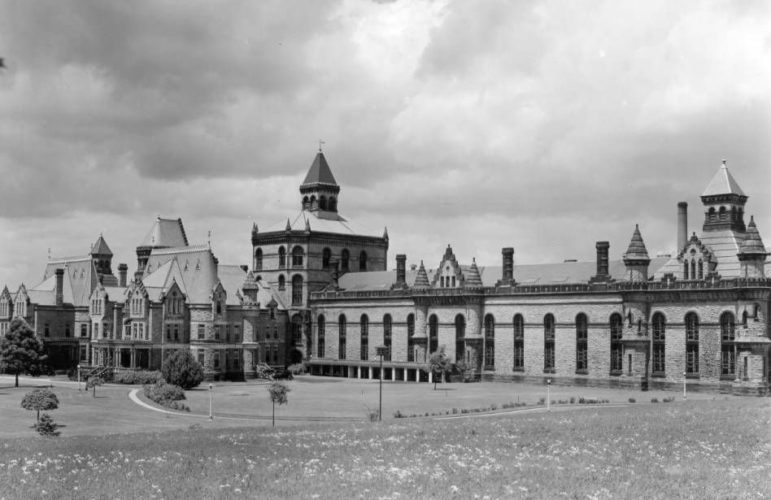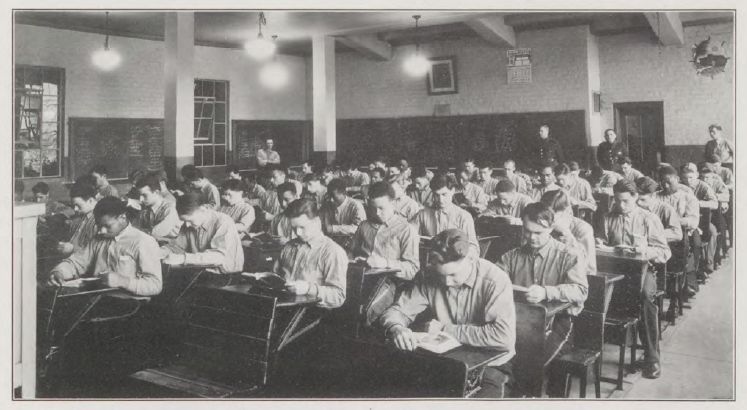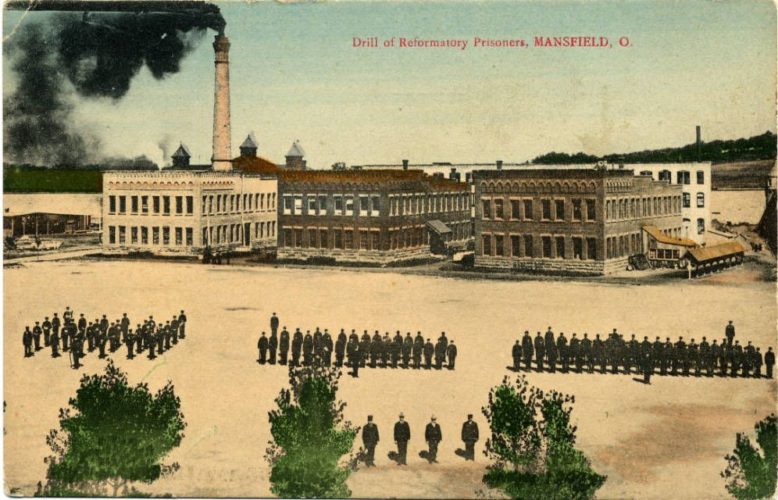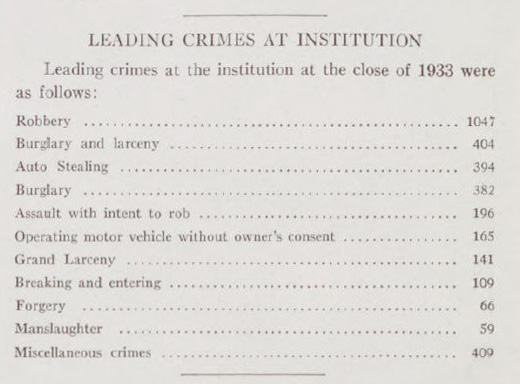Penalty and Incentive: The Ohio State Reformatory

The Ohio State Reformatory – also known as the Mansfield Reformatory – opened its doors on September 15, 1886. As the name implies, the Reformatory was first imagined as a place for reforming inmates, giving them an opportunity to recreate their lives, becoming productive citizens and better versions of themselves. The Ohio State Reformatory “… must not only penalize but it must furnish the incentive for the individual to direct his activities in a new and worth-while line,” wrote Superintendent Thomas C. Jenkins in 1934.

The Reformatory’s cell blocks stand five and six stories high, originally designed to hold up to nearly 2,000 inmates with one inmate per cell. By 1934, however, some held two, even three, men. And while the Reformatory was originally imagined as an intermediate prison – “an intermediate step between reform schools and penitentiaries” – violence was common, particularly as the prison became overcrowded. “Life for the prisoners was anything but ideal… Shanks, shivs, dice, and other contraband were found within the crevices of the prisoners’ cells,” according to The Ohio State Reformatory’s website.

By the 1980s, overcrowding and inhumane conditions forced the closure of the Ohio State Reformatory, and its last prisoners were soon moved to the newly-built Mansfield Correctional Institution, which stands just west of the old prison. Due to its age and condition, the Ohio State Reformatory might have been demolished – indeed, parts of the complex were demolished shortly after the prison’s closure – but in 1995 the Mansfield Reformatory Preservation Society was formed with a goal of saving the structure. The organization has turned the prison into a museum and provides tours, both guided and unguided, to visitors for most of the year.
One highly-popular visitor experience is the Reformatory’s paranormal programming, ranging from Ghost Walks (guided tours which are led in the dark) to how-to classes on ghost hunting. Beginning hunters through those with experience can also participate in overnight hunts, where they are free to explore areas of the prison that are known for their ghostly activities. Building on its reputation for being haunted, the Reformatory hosts an annual Halloween event weekends through November; this year, the event is named “Escape from Blood Prison.” For more information on this event, click here to visit its website.

Paranormal investigation is not the Reformatory’s only claim to fame, however. Since 1975, when the prison was still in operation, it has been used as a set for numerous films, including Harry and Walter Go to New York, Tango & Cash, and Air Force One. Most notably, however, was the 1994 film The Shawshank Redemption. In fact, a good deal of tourism has sprung up around Shawshank: the Shawshank Trail created by Destination Mansfield – Richland County features a number of sites near Mansfield that were included in the film, and every summer Mansfield hosts the Shawshank Hustle, a 7K (4.35 mile) race that starts and ends at the Reformatory.
As a significant historic site, a gorgeous example of architecture, or a spooky experience, the Ohio State Reformatory is a fascinating site for visitors of all types. We hope you’ll consider a visit there! And if you’re interested in learning more about the Reformatory, here are a couple of links to check out:
- A YouTube video produced by Our Ohio
- Archival materials held by the Ohio History Connection
- More on Ohio Memory!
Thank you to Shannon Kupfer, Digital Initiatives Librarian at theState Library of Ohio, for this week’s post!



Leave a Reply
You must be logged in to post a comment.